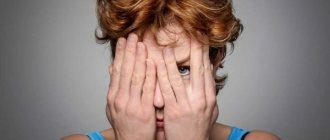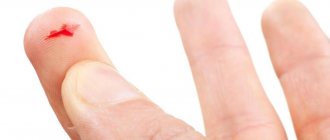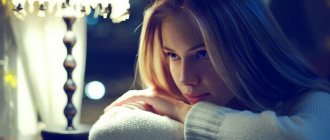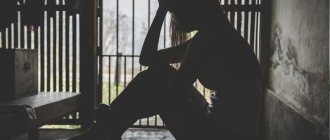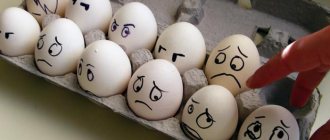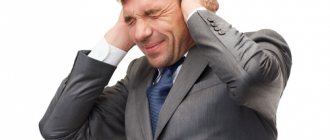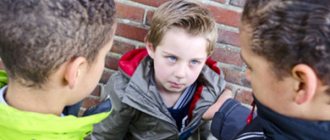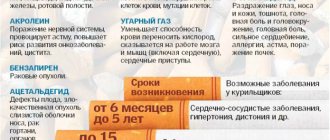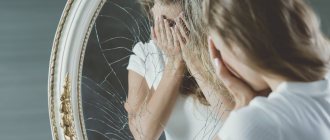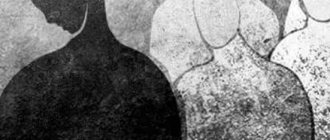What is coulrophobia
What is coulrophobia? Coulrophobia is the fear of clowns. The image of a comedian with a red nose evokes hostility and panic. A wide smile is associated with a grin, and makeup or a mask evokes associations with duplicity, hidden evil and aggression. Coulrophobia is not an independent mental disorder, but it is conventionally classified as a form of anxiety-phobic disorder.
This is interesting! Sometimes coulrophobia is called the fear of dolls, but this is true when we are talking about figurines of jesters. In general, the phobia of dolls has its own name - pediophobia.
Consequences of a phobia of clowns
Coulrophobia is not a self-limiting anxiety, even if there is no object of panic. In reality, few people encounter performers in disguise, so fear may not be reinforced by the object, but manifest itself in another way.
A lot of trouble is caused by others who, having learned about the “funny” phobia, mock and show misunderstanding. Therefore, coulrophobes are more likely to take offense at people who make fun of their weaknesses.
Many people think that they can avoid the discomfort of a phobia if they do not attend circuses and festive events. However, an unexpected encounter with a frightening object may occur, so coulrophobes need corrective work.
Signs of coulrophobia in adults and children
We’ve figured out what the fear of clowns is called, now let’s move on to its signs. Among the symptoms of phobia, four main groups of signs can be distinguished. Let's take a closer look at them.
Panic attack when meeting a clown
Coulrophobia, somatic symptoms:
- tachycardia;
- arrhythmia;
- cold sweat;
- increase or decrease in pressure;
- general weakness;
- headache;
- dizziness;
- tinnitus;
- lack of coordination;
- nausea;
- feeling of suffocation;
- shiver;
- fainting.
A panic attack is diagnosed when three or more symptoms occur at once. During an attack, the patient is afraid of going crazy and dying. His reactions are uncontrollable.
Protective behavior system
Coulrophobe avoids meeting circus performers and potential meeting places. He doesn't watch them perform on TV or on tape. The patient may even be frightened by a clown mask in a store, a picture in a book, or a toy. Coulrophobes do not go to City Day celebrations and other public celebrations, since the image of a jester or buffoon, which often occurs at such holidays, also frightens them.
Defensive actions when meeting a clown
When meeting an artist in the form of a jester, the patient falls into a stupor or runs away. Some people show aggression towards clowns, attacking them, screaming and calling for help.
Sleep disturbance
Constant anxiety and nightmares prevent a person from falling asleep. Sometimes the patient forcibly deprives himself of sleep, tries to maintain vigor with pills, energy drinks, alcohol, coffee, which further aggravates his mental and physical condition. With prolonged sleep deprivation, visual, auditory and tactile hallucinations appear.
How does fear manifest itself?
The phobia that children or adults experience when seeing clowns, in some cases, can have very real mental symptoms:
- worsening mood;
- dizziness;
- dry mouth;
- sweating increases and legs begin to tremble;
- a person cannot cope with emotions - he runs away, screams, cries, etc.;
- a decrease in pressure can provoke fainting;
- vomiting appears.
Symptoms for each person can be completely different - it all depends on personal characteristics. The feeling of fear of a clown is a mysterious phenomenon and has no specific explanation.
The clown is the embodiment of aggression
What frightens a coulrophobe:
- loud laughter;
- sharp gestures;
- unnatural behavior;
- expression;
- unnatural skin and hair color;
- Red nose;
- loud screams.
To adults, the jokes of artists in a red wig and wide pants seem stupid, and the very behavior of the speaker is associated with the behavior of mentally ill people. On a subconscious level, even greater fear arises because of a bright red nose, bright colors in clothes, red shoes. These colors, combined with a feigned (fake) smile, are perceived as aggression.
This is interesting! Children see even greater aggression in an artist with clown makeup. They perceive big legs as physical aggression, a big mouth as verbal aggression. If you ask a psychologist how children depict a mother who is screaming, he will answer that kids draw a big red mouth. Here is the answer to the question “why are children afraid of clowns?”
Coulrophobia in Americans
In the USA, a clown is present at every children's party. But at the same time, this is a favorite image for horror films and thrillers. In American horror films, killers and psychopaths often hide behind the clown mask. In Russia, such films are in great demand. Infatuation with such pictures can also lead to the development of a phobia. The image of a killer clown is also found in Russian films, songs, quest programs, and labyrinths of fear. Young people love to use this image when celebrating Halloween.
This is interesting! In American history, there have been real cases of murderers dressing up as clowns. Perhaps this is easily the basis of horror films, and also relates to the reasons for the development of a phobia.
Causes of fear of clowns
There are two reasons for the development of coulrophobia: childhood psychotrauma and suggestibility (fear after watching horror films). Coulrophobia occurs in children due to age-related characteristics (unstable psyche) and in suspicious, impressionable, insecure adults with low self-esteem.
It’s not just appearance and behavior that frightens, images from films deposited in the subconscious, associations with mental patients. Behind a phobia there may be a fear of death, a fear of being the center of attention, or a fear of the unknown.
In children, a phobia of clowns occurs due to childhood trauma and a panic attack when meeting an artist. During the performance, the artists come close to the children, grab their hands, and laugh loudly. In addition, there is no eye-to-eye contact, which children are accustomed to.
Children's causes of phobia:
- fear upon contact with an artist in the form of a jester;
- fear of communicating with a character who is unlike a person;
- associations with the image of a villain from cartoons or films.
The mechanism for the formation of a phobia can be indirect, for example, in the children's room there was a moving clown toy like a tumbler or a toy with musical accompaniment, and when the parents quarreled or slammed doors, the toy moved. Fear from parents' quarrels can be transferred to the image of a toy, the image of a jester. Due to constant stress, children become nervous, fearful, withdrawn, insecure, and uncommunicative.
Thus, we can identify five reasons for the development of a phobia (fear of clowns, reasons):
- Childhood psychotrauma directly or indirectly associated with circus performers. We are talking about the immediate fear of meeting a funny guy in big shoes or about other negative things that are not directly related. For example, a child got a severe stomach ache during a clown performance, or the child had an argument with someone, got into a fight, or found himself in an awkward situation. Or at night I was frightened by a clown toy that fell from the shelf and sparkled angrily in the moonlight.
- Fear of the unknown. We don't see who is really behind the makeup, and this reduces the feeling of security. In addition, psychology knows of cases where people transferred other fears associated with the unknown to the clown. For example, fear of the future or upcoming changes (indirect associations).
- Lack of self-acceptance, hatred of one’s vices and traits, the reflection of which can be seen in the image of a jester. Example: duplicity, fake smile. Perhaps the person himself hides negativity behind a smile and expects the same from the person with makeup. Over time, hatred turns into phobia (fear of exposure).
- Fright after watching horror films. The person's suspiciousness and impressionability are to blame.
- Other fears that may be confused with a phobia of clowns. For example, fear of public speaking, attention, fear of getting into an awkward situation, fear of laughter, fear of people, fear of crazy people, etc.
It is important! It is better to entrust the determination of the exact cause to a psychologist. He will test for fear of clowns and related fears and determine where the fear came from. The success of treatment and prognosis depend on the correct identification of the root cause.
Coping methods
It would seem that the simplest thing is not to go to the circus, not to watch films and programs with the participation of clowns.
But there is a high risk of encountering them in real life.
Often on city streets and in children's institutions, festive events and promotions are held with the participation of these characters. Frequent panic attacks deplete the nervous system . This condition requires treatment.
Psychotherapy
The “dress-up game” often works with a child .
Fear recedes if the child sees that under the layer of makeup there is a well-known person.
You can dress in a clown costume in the presence of your baby, and offer to paint your face together. You can invite your child to dress up as a clown and perform a funny act in front of their family or friends.
Show your child good cartoons where the clown really helps those in trouble and entertains with funny numbers. If you want to take your child to the circus, make sure that the program is designed for spectators of all ages.
A psychotherapist should work with adults . In a conversation, he will find out the causes of coulrophobia and help you take measures to overcome fear. The patient can view photos and videos of clowns. He may then be asked to face the fear head on.
In advanced cases, hypnosis . In a state of trance, a person is told that there is nothing dangerous in comic characters.
Pharmacology
If a phobia turns into depression or neurosis, medication support is necessary.
a psychiatrist should prescribe any medications . It can be:
- tranquilizers – Diazepam, Dormicum, Phenazepam, etc.;
- antidepressants – Pyrazidol, Prozac, Tsipramil, Anafranil, etc.;
- nootropic drugs - Pyritinol, Mexidol, etc.
The doctor may recommend medications and teas that have a mild calming effect - with mint, valerian, motherwort, chamomile, etc.
How to recognize schizophrenia in a child? Find out about this from our article.
How to get rid of coulrophobia
To get rid of a phobia, you need to replace the negative image of a clown with a positive one and work through psychological trauma, if any. This is only possible through coming closer to fear. Individual psychotherapy, cognitive behavioral therapy, and hypnosis are used to treat phobias.
How to help your child
To help your child, you need to organize a meeting with the artist playing the clown. The child must get to know him personally and see the path of transformation. After this, you can invite the child to dress up as a clown himself.
Advice from psychologists
You can cope with the fear of clowns on your own only at the initial stage and with a clear understanding of the cause of the phobia. In other cases, you need to consult a psychologist. He will help you understand what exactly frightens you, find the subconscious causes of the phobia, and draw up a treatment plan.
What is the purpose of working with a psychologist:
- awareness of the irrationality of the fear of clowns;
- search for psychotraumas;
- change in attitude towards a traumatic situation;
- search for destructive patterns of behavior, the influence of fear on life;
- restructuring destructive thinking and behavior;
- mastering self-control and self-regulation techniques;
- getting closer to the object of fear;
- Trying on the image of a clown.
At an advanced stage, with severe exhaustion and lack of sleep, treatment with hypnosis is indicated. This will make it easier for the specialist to get into the depths of the subconscious, and the client will be able to relax and recover.
It is important! For complications such as panic attacks, hallucinations, psychosis, and insomnia, medication is indicated: sleeping pills, tranquilizers, sedatives, antidepressants. You cannot self-medicate. Only a doctor can prescribe the drug and select the dosage.
Independent work with a phobia
How to get rid of your fear of clowns yourself:
- Try to understand what exactly scares you. Make a plan to address this cause. Maybe you're scared of not being able to see a person's true emotions, or maybe you're scared of an artificial smile. In this case, your distrust of the world is to blame. Or you are afraid of being ridiculed. Why? Is it because of insecurity, negative memories from the past, or something else?
- Throw a costume party.
- Ask a loved one to dress up as a clown. Do you trust him?
- Avoid watching horror and thriller films that contain clowns.
It is important! If you cannot independently determine the cause and overcome the fear, then consult a psychologist.
What to do during a panic attack:
- Take deep, long breaths in and out.
- If you can’t calm down, then breathe into the bag or into your folded palms.
- Massage your earlobes and little fingers (soothing points are located there).
- Remember or imagine something pleasant.
- Go to a quiet place.
- Repeat phrases for self-hypnosis that you are calm and your fear is irrational.
The emergence of coulrophobia in modern society
Studying what coulrophobia is and how it arose, experts recall the last century, when horror films with the participation of negative characters represented by clowns became widespread. It is believed that the rise of the disorder was provoked by the horror film “It” based on the work of Stephen King, in which the main character, a clown, kills children.
Fear of dogs - what is the name of the phobia?
Numerous novels also contributed to the emergence of fear; in them, the jester appears in the form of a monster.
Originating in childhood, the fear of clowns can haunt a person into adulthood, although many people hide it from others. This phobia is not considered dangerous to health, since in reality you can avoid the provoking factor without visiting the circus or watching films with a similar plot.
It is enough to be attentive to children in order to avoid the object of fear. Although sometimes parents act in the opposite way. Not realizing that the child suffers from a phobia, they take him to a circus performance or a children's party with the participation of jesters.
Important! If a child begins to panic at the sight of a disguised artist, you must immediately take him away and calm him down. In severe cases, it is recommended to consult a psychologist to correct behavior.
